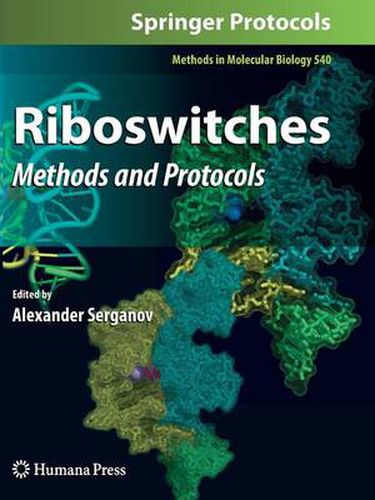Readings Newsletter
Become a Readings Member to make your shopping experience even easier.
Sign in or sign up for free!
You’re not far away from qualifying for FREE standard shipping within Australia
You’ve qualified for FREE standard shipping within Australia
The cart is loading…






The transfer of hereditary information from genes to proteins is one of the essential pr- esses in all living organisms on our planet. Some genes are expressed without modu- tion throughout the life of a cell, while many others require various degrees of control to precisely balance cellular metabolism with environmental conditions. For many years, researchers attributed this regulatory function to protein molecules, which can direct gene expression at multiple levels, in response to various input signals, and with different degrees of selectivity. Even when the control of gene expression was achieved via direct interactions between proteins and mRNAs, the active role was routinely assigned to p- teins, while RNAs were considered merely as recipient molecules. The discovery of RNA interference and multiple bacterial regulatory RNAs caused a shift from the perception of proteins as the predominant regulators of gene expression to the acknowledgement of the importance of RNAs in many regulatory circuits. Such a viewpoint received strong support several years ago after the discovery of riboswitches and related RNA sensors - mRNA regions capable of alternating their conformations in response to the presence of cellular metabolites and other physical or chemical cues. These classes of RNA pass on cellular and environmental information directly to transcription or translation machinery without the assistance of proteins. The riboswitches are commonly defined as evolutionarily conserved mRNA regions capable of specific binding to metabolite molecules, and, as a result, adopting a particular RNA conformation that modulates gene expression.
$9.00 standard shipping within Australia
FREE standard shipping within Australia for orders over $100.00
Express & International shipping calculated at checkout
The transfer of hereditary information from genes to proteins is one of the essential pr- esses in all living organisms on our planet. Some genes are expressed without modu- tion throughout the life of a cell, while many others require various degrees of control to precisely balance cellular metabolism with environmental conditions. For many years, researchers attributed this regulatory function to protein molecules, which can direct gene expression at multiple levels, in response to various input signals, and with different degrees of selectivity. Even when the control of gene expression was achieved via direct interactions between proteins and mRNAs, the active role was routinely assigned to p- teins, while RNAs were considered merely as recipient molecules. The discovery of RNA interference and multiple bacterial regulatory RNAs caused a shift from the perception of proteins as the predominant regulators of gene expression to the acknowledgement of the importance of RNAs in many regulatory circuits. Such a viewpoint received strong support several years ago after the discovery of riboswitches and related RNA sensors - mRNA regions capable of alternating their conformations in response to the presence of cellular metabolites and other physical or chemical cues. These classes of RNA pass on cellular and environmental information directly to transcription or translation machinery without the assistance of proteins. The riboswitches are commonly defined as evolutionarily conserved mRNA regions capable of specific binding to metabolite molecules, and, as a result, adopting a particular RNA conformation that modulates gene expression.